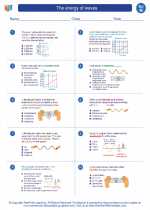What are Alleles?
Alleles are alternative forms of a gene that arise by mutation and are found at the same place on a chromosome. They can result in different traits or characteristics.
Dominant and Recessive Alleles
Some alleles are dominant, meaning that their effect is visible even if there is only one copy of the allele present. Recessive alleles are only expressed if both copies of the gene have the same recessive allele.
Genotype and Phenotype
The combination of alleles an organism has is called its genotype, while the observable traits that result from the genotype are called its phenotype.
Mendelian Inheritance
Gregor Mendel's work with pea plants helped to establish the principles of inheritance, including the segregation and independent assortment of alleles during gamete formation.
Genetic Crosses
Using Punnett squares, geneticists can predict the outcomes of genetic crosses and determine the probability of certain genotypes and phenotypes appearing in offspring.
Population Genetics
Allele frequencies in a population can change over time due to factors such as natural selection, genetic drift, and migration, leading to evolutionary changes in a population.
.





